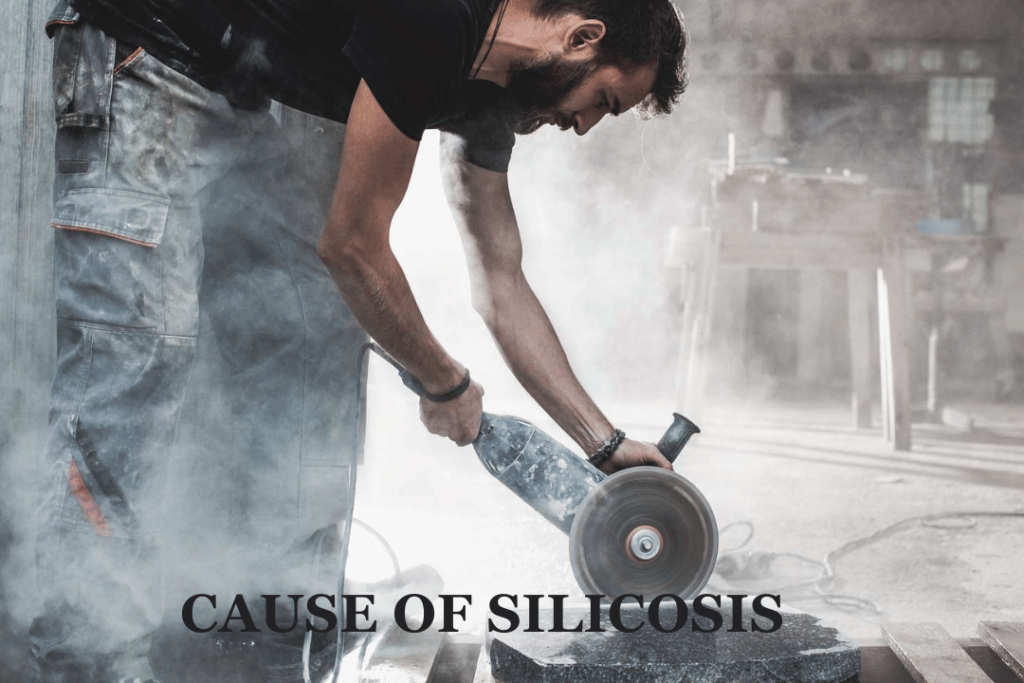In the heart of Pacoima’s industrial stretch, amidst the clamor of workshops, a dire health crisis looms over the laborers. They toil relentlessly over hefty slabs of speckled stone, their saws whining in a discordant symphony with the sounds of Spanish-language rock. But beneath the seemingly ordinary workday, an insidious danger lurks – silicosis, an incurable and suffocating disease that has afflicted dozens of workers across California, often resulting in premature death.
Silicosis: A Growing Threat
Silicosis, a disease that dates back centuries, is now emerging as a significant health concern in California. It primarily affects workers who inhale tiny particles of crystalline silica while cutting and grinding stone that contains this mineral. What makes the current situation alarming is the surge in cases among young workers, predominantly Latino immigrants, who work with engineered stone countertops.
Unlike previous outbreaks that struck individuals in their 60s or 70s after prolonged exposure, silicosis now affects men in their 20s, 30s, or 40s, leaving them with a terminal diagnosis.
The Human Toll:
Leobardo Segura Meza, a 27-year-old father from Pacoima, vividly illustrates the devastating impact of silicosis. He recounts how he had to abandon playtime with his children because his oxygen tank would run low, leaving him breathless. A decade of cutting and installing countertops had exposed him to pervasive dust, and he had been provided with an inadequate dust mask.
His symptoms included a persistent cough, weight loss, and a collapsed lung. For him and countless others, the diagnosis came as a shock – there is no cure for silicosis, and the only hope is a lung transplant. But as more workers fall ill, the grim reality emerges that there may not be enough lungs to save them all.

Raising Awareness:
Maria Cabrera, a community outreach worker with the nonprofit Pacoima Beautiful, understands the urgency of the situation. She, along with her colleague Claudia Vasquez, visits places like the Home Depot in San Fernando, where laborers gather in search of work. Few among them are aware of the looming danger of silicosis. Cabrera educates them about the disease, urging them to use wet saws and NIOSH-approved respirators to protect themselves.
Workplace safety regulators recommend various measures, including water spraying systems, ventilation, vacuum systems, and protective respirators. The risk is severe, with estimates suggesting that 1 in 5 stone workers in Australia may have the disease, and in California, it’s expected to afflict hundreds, with potentially fatal consequences.
The Alarming Statistics:
A recent study conducted by UCLA and UCSF physicians sheds light on the severity of the issue. Among Californian workers who contracted silicosis from grinding countertops, nearly one-fifth did not survive. Their median age at death was just 46 years.
Over half faced delays in diagnosis, with the disease often being mistaken for bacterial pneumonia or tuberculosis. One-third already had severe lung wounds when diagnosed. Los Angeles County, in particular, has witnessed a surge in cases, with 60 out of 83 cases among countertop workers reported since 2019.
Government Safety Measures:
In response to the crisis, California workplace safety regulators are developing emergency rules to protect workers in the engineered stone industry. The material, known for its high silica content, has become the dominant choice for countertops. L.A. County is even considering a ban on the sale and installation of “silica-engineered stone” to prevent further harm to workers.
While existing safety standards must be adhered to, there is a growing consensus that additional measures are necessary to ensure workplace safety.

Controversy and Advocacy:
The debate rages on regarding the responsibility for worker safety. The Agglomerated Stone Manufacturers Association contends that engineered stone can be cut safely if best practices are followed. They argue that the real issue lies in poor adherence to safety measures by fabricators and call for simplified and rigorous enforcement of regulations.
On the other hand, advocates for worker safety, such as Raphael Metzger, argue that typical respirators and standard measures may not be sufficient to protect workers from dangerous silica exposure. Even with “wet methods,” workers can still face significant risks, as revealed by NIOSH research.
Silicosis, once a disease of the past, has resurfaced with vengeance in California’s countertop industry, claiming the health and lives of young workers. The situation calls for urgent and comprehensive action to protect those who labor in this perilous environment. While debates about the responsibility for safety continue, the government’s role in enforcing stringent regulations and potential bans on high-silica content materials like engineered stone remains critical.
The stark reality is that without immediate intervention, more lives will be lost, and the specter of silicosis will continue to haunt California’s workforce.





